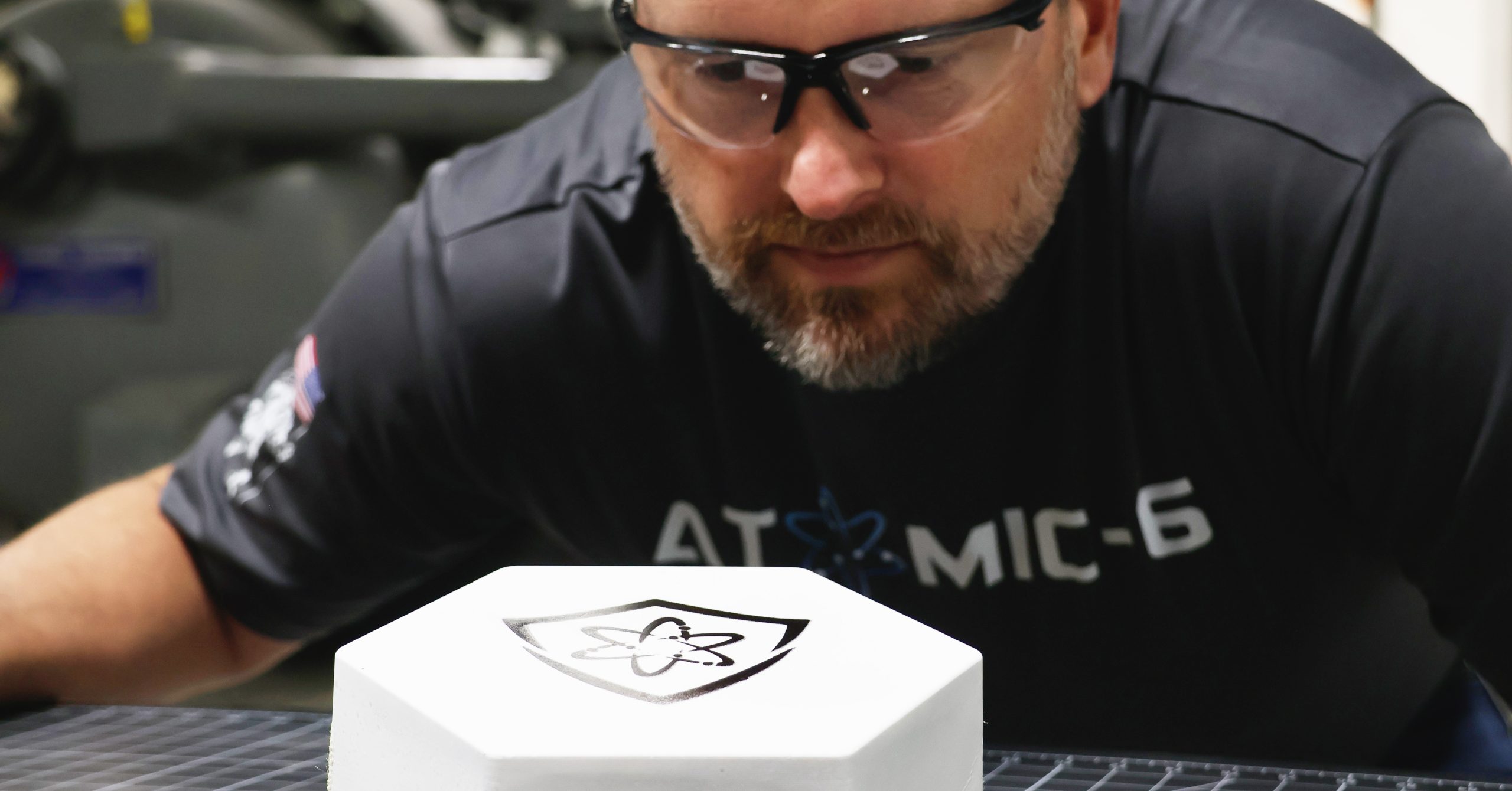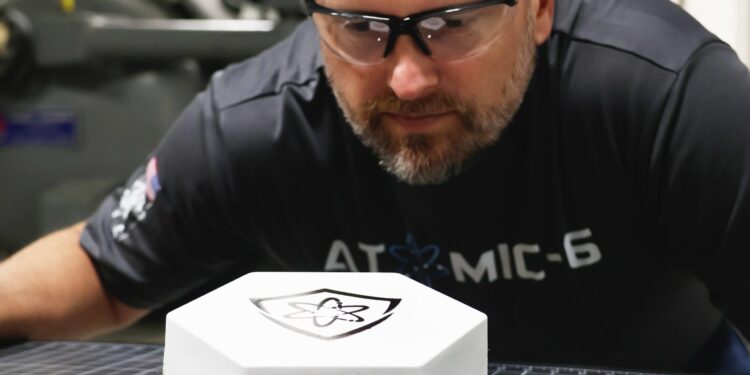
WASHINGTON — Atomic-6, a composite materials manufacturer based in Marietta, Georgia, believes it has found a lighter, more resilient alternative to traditional satellite shielding. Following successful lab tests of its “Space Armor” shielding that protects spacecraft from debris impact, the company is preparing to demonstrate it in orbit and start producing it for the U.S. Space Force and other organizations.
The development of the Space Armor technology was funded by the U.S. Air Force and U.S. Space Force under a $1.2 million Small Business Innovation Research (SBIR) Phase 2 award and a $3.8 million Tactical Funding Increase (TACFI) agreement that includes private matching funds.
Rethinking a 1940s invention
The market is looking for a new type of debris shield as the technology hasn’t changed much since the so-called “Whipple shield” was introduced in the 1940s by astronomer Fred Whipple, said Atomic-6 CEO Trevor Smith.
Most shielding used today is effective but the government and many commercial firms are interested in alternatives, Smith told <em>SpaceNews.
The goal of the SBIR contract is to advance protective shielding technology that protects satellites from debris impacts without interfering with radio-frequency communications — resisting impact while allowing radio communications to and from the satellite it’s protecting.
Smith said Space Armor is lighter and thinner than the Whipple shield, though the product has not yet completed flight tests.
The company has developed two product variants: Space Armor Lite, designed to stop particles up to 3 mm in diameter, and Space Armor Max, engineered to withstand impacts from debris up to 12.5 mm in diameter.
The Space Armor hexagonal tiles are less than an inch thick. The tiles can be attached to spacecraft surfaces to protect critical components. According to Smith, the Space Armor Lite tiles are “about 30% lighter and 15% thinner than the Whipple aluminum shields.”
The company conducted hypervelocity impact testing at the University of Dayton Research Institute and Texas A&M University, firing 3 mm aluminum projectiles at speeds over 7 kilometers per second — roughly orbital velocity.
The results, Smith said, demonstrated that Space Armor tiles are fragmentation resistant — they absorb and contain debris impacts rather than creating secondary fragments that could endanger other satellites.
Flight qualification is forthcoming, said Smith. “We do have a verbal offer to fly with a customer next year.”
Avoid creating more debris
Orbital debris remains one of the defining hazards of space operations. Millions of untrackable fragments smaller than a centimeter zip around low Earth orbit at speeds exceeding 7 km per second — fast enough to puncture fuel tanks or tear through a spacesuit.
The promise of a modular, lighter system that resists fragmentation could be appealing to both the military and the commercial space industry, Smith said.
Atomic-6 is also experimenting with curved Space Armor structures for potential use in astronaut suits. The shielding is also being looked at by defense contractors for use in ground combat vehicles. “This, in theory, should protect from lasers trying to blind a comms device,” Smith said.
Smith declined to discuss pricing but said satellite insurers have shown interest. During a recent trip to meet with underwriters at Lloyd’s of London, he said they told him that “once Space Armor is flight qualified, they would consider offering a discount to their customers if they’re flying the products, because they see it as such a risk mitigant.”
Because Space Armor was developed under an SBIR contract, Atomic-6 retains data rights to the technology — an important advantage as it prepares for commercialization.
Lighter solar panels
The Space Armor program isn’t Atomic-6’s only Space Force-funded project. Under a separate $2 million TACFI agreement, the company is developing Light Wing, a solar array designed to stow and redeploy.
“Our solar array is going through flight qualification as well,” Smith said. An early version is scheduled to fly in February 2026. “That will buy down risk,” he added, as the company completes a one-kilowatt, fully deployable version for a later mission.
The array design seeks to minimize the number of moving parts to reduce deployment failures. “And because it’s retractable and redeployable, if you have any issues on deployment, you can simply retract it and then try to deploy again,” Smith said.
Smith said Atomic-6 is laying out plans to build a production facility for both Space Armor and Light Wing to start manufacturing after the products are qualified.
